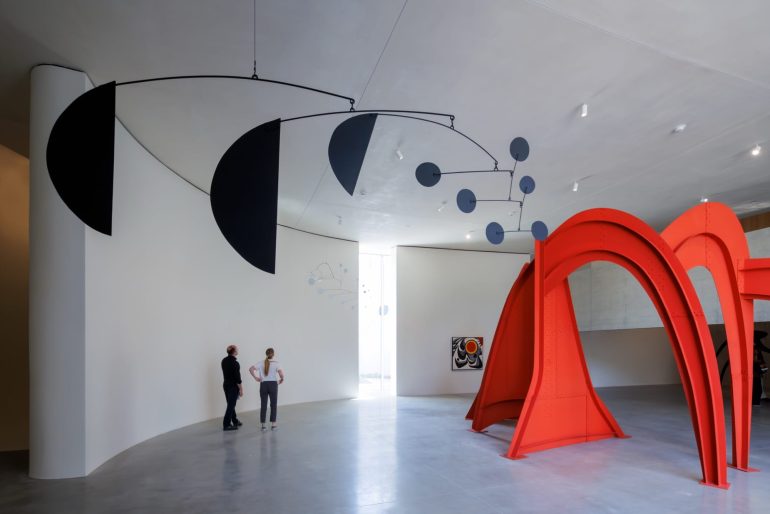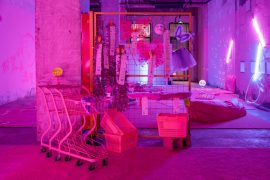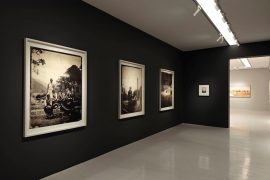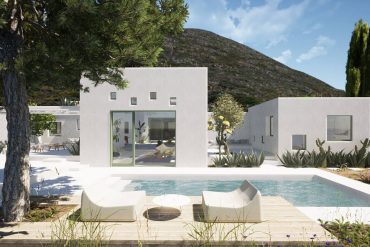In the contemporary art scene, two remarkable exhibitions—”Calder Gardens” in Philadelphia and Chiharu Shiota’s “Diary”—explore the relationship between art and nature, memory and space in strikingly different ways.
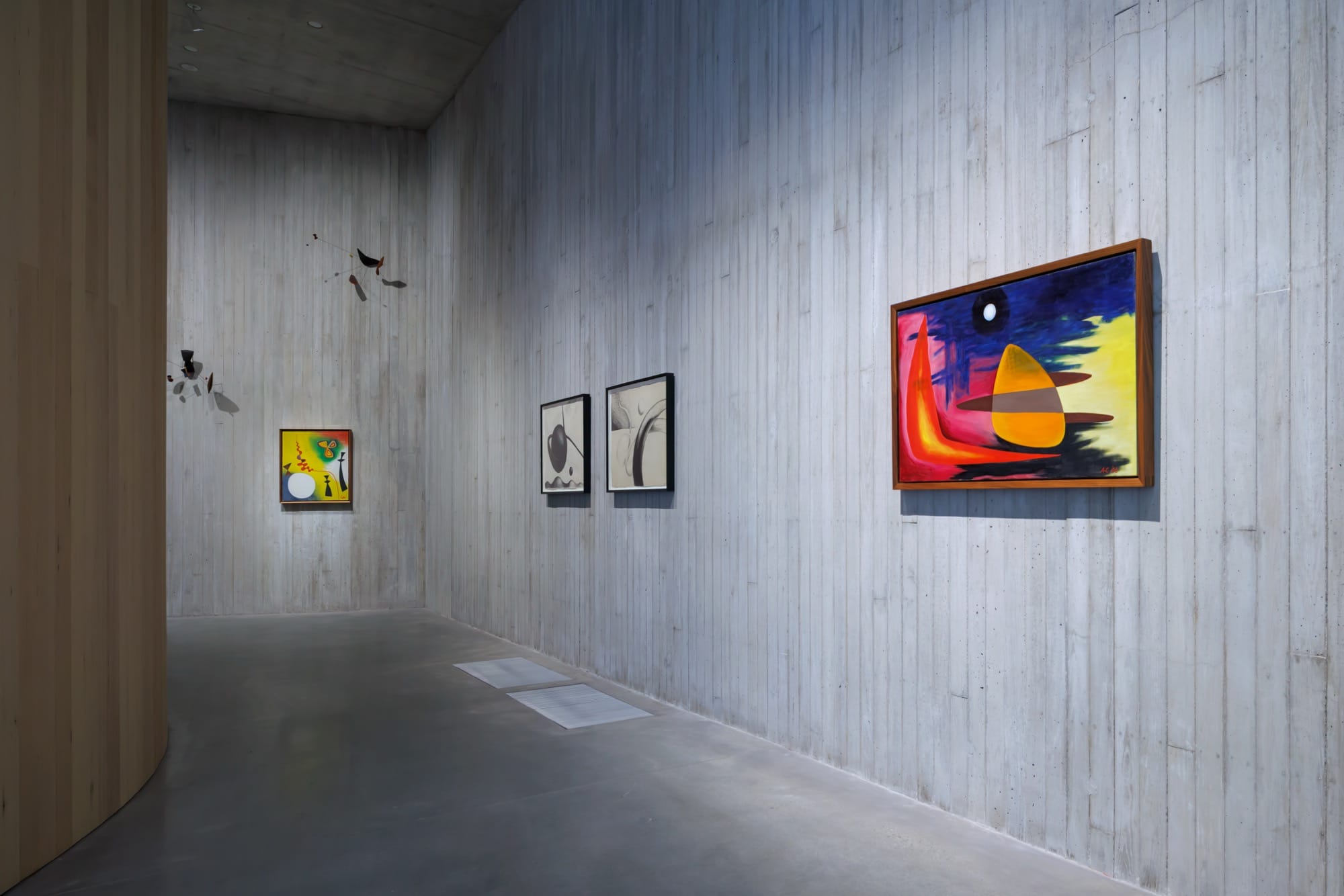
The former merges light and prairie to breathe life into sculptures, while the latter weaves the weight of war memories with blood-red threads. These contrasting artistic expressions collectively offer profound reflections on human emotions and the environment.
Calder Gardens: Dynamic Sculptures in Natural Light
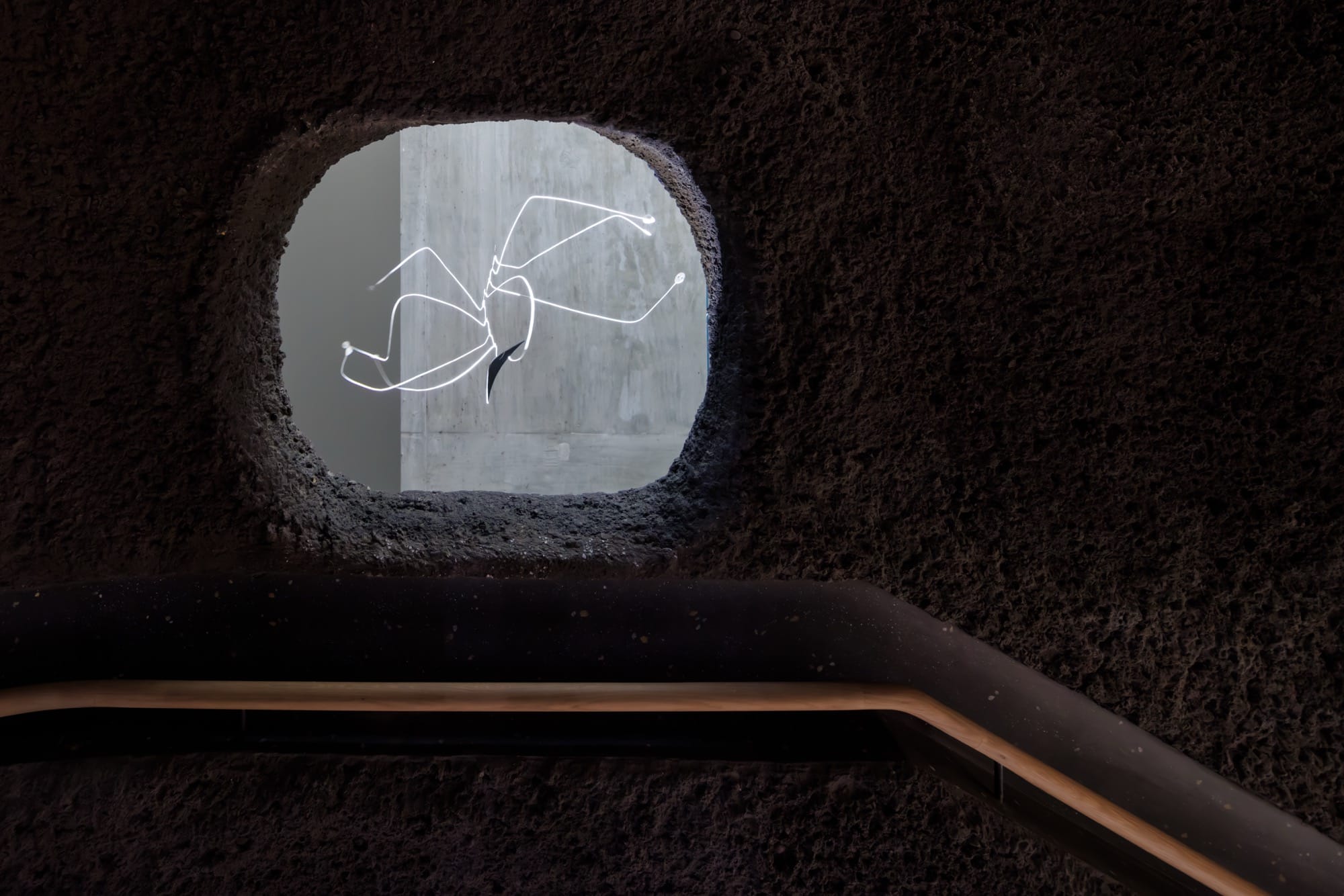
The Calder Gardens Museum in Philadelphia is a museum centered around the concepts of light and nature, dedicated to showcasing the works of renowned American sculptor Alexander Calder. The museum ingeniously integrates architecture, sculpture, and landscape design to create a unique artistic experience space.
Alexander Calder, renowned for his kinetic sculptures, finds his work amplified in Philadelphia’s newly opened “Calder Gardens.” The museum breaks away from the traditional “white cube” model, seamlessly blending exhibition spaces with prairie landscapes.
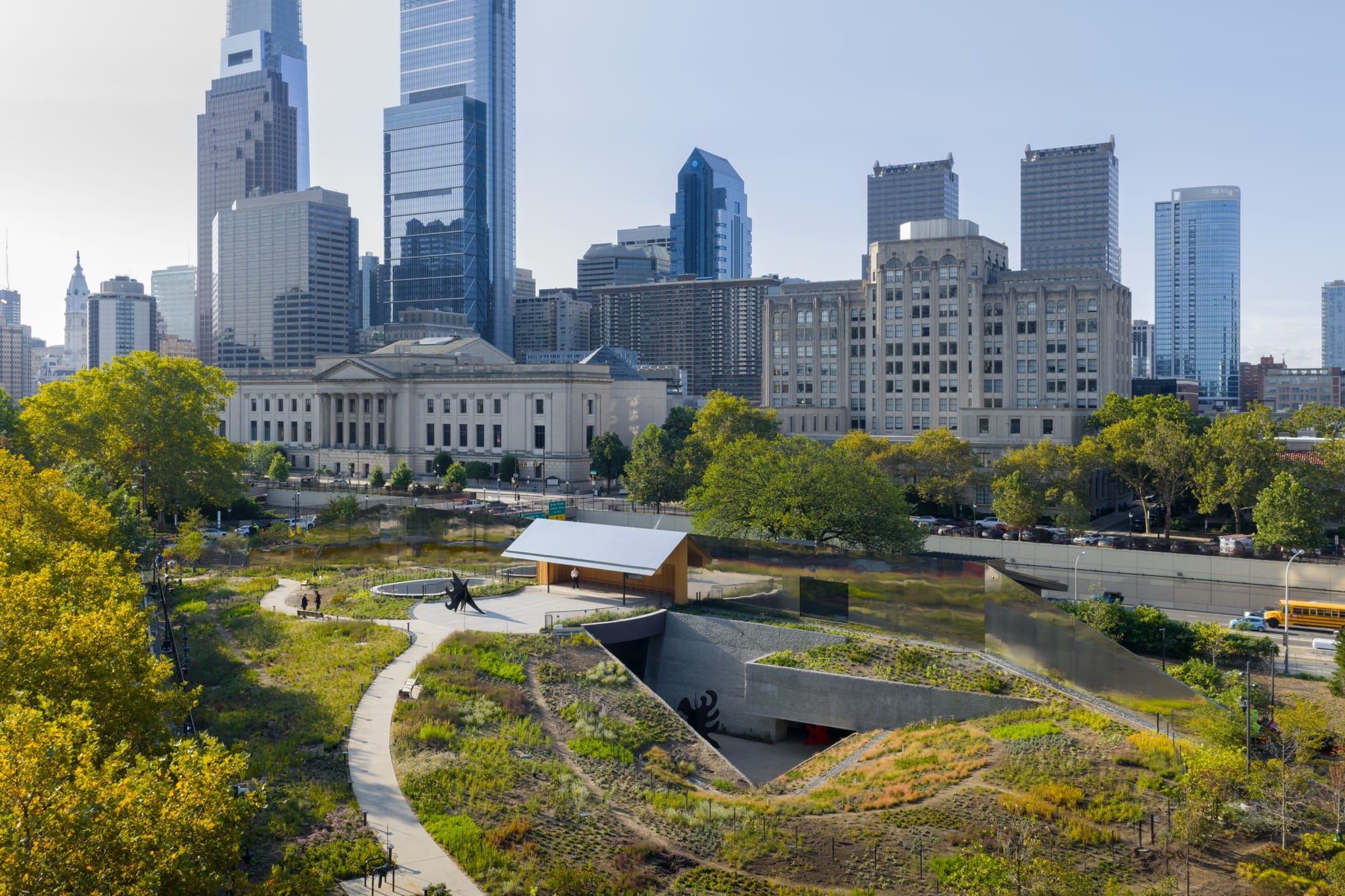
Floor-to-ceiling windows flood the interiors with natural light, causing the metal surfaces of the sculptures to shimmer and shift with the sun’s movement, as if imbued with breath. This design not only aligns with Calder’s belief that “art should be part of life” but also enhances the dynamic essence of his sculptures through the untamed beauty of the prairie, where wind interacts with the artworks.
The exhibition is divided into indoor and outdoor sections. Inside, Calder’s early wire sculptures and later large-scale hanging installations are displayed, while the outdoor prairie features iconic pieces like “Lobster Trap and Fish Tail.” Visitors can wander among these works, experiencing sculptures in a new, natural context. This layout blurs the boundaries between art and ecology, suggesting a symbiotic relationship between human creativity and natural order.
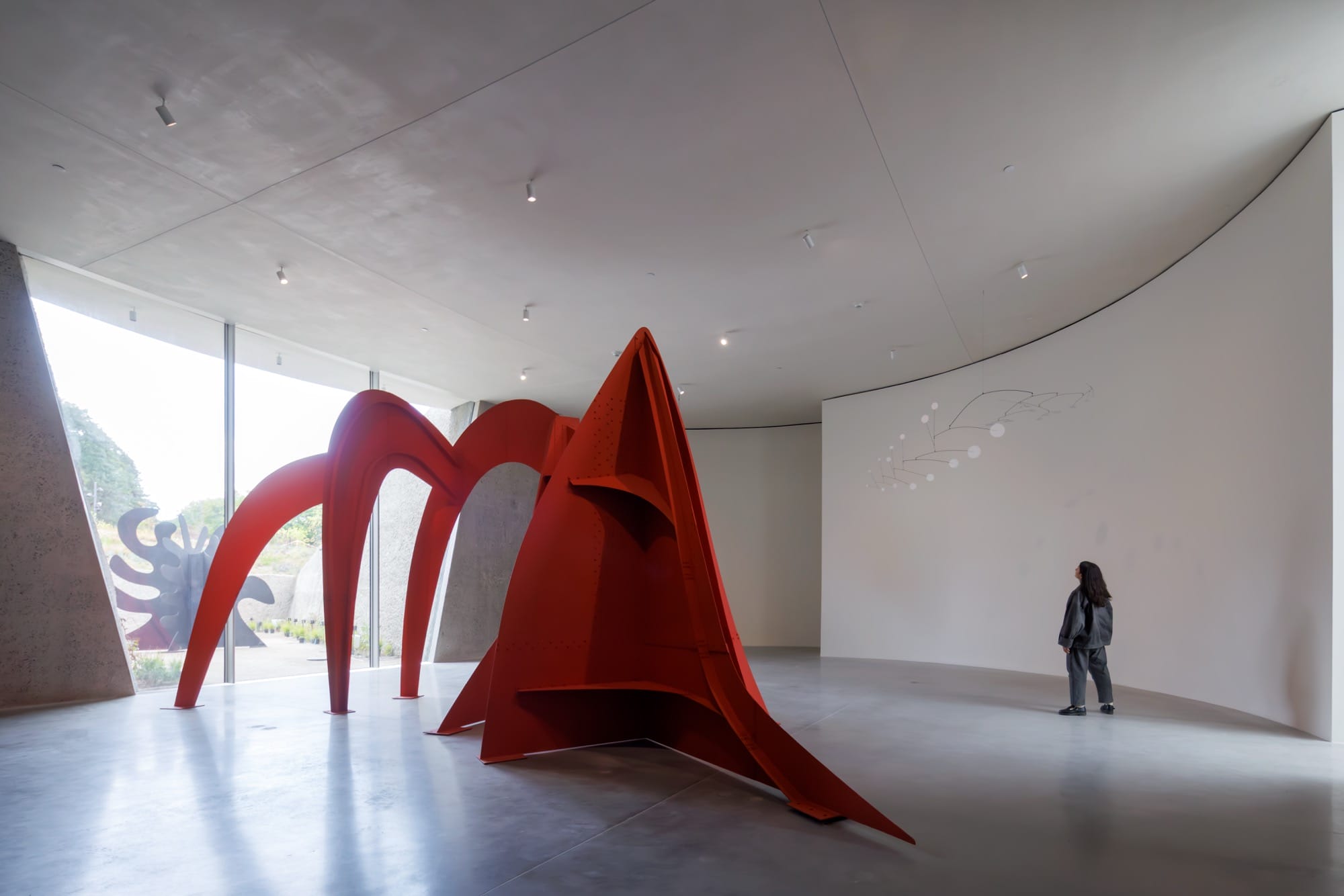
1. Architectural Features
• Lighting Design: The museum features an open glass structure that allows ample natural light, enabling Calder’s kinetic sculptures to display varying forms under changing light and shadow.
• Harmony with Nature: Surrounded by prairie landscapes, the building blurs the boundaries between indoors and outdoors, emphasizing the symbiotic relationship between art and nature.
• Spatial Layout: The exhibition halls are designed with fluidity in mind, guiding visitors to freely move among the sculptures and experience the dynamic beauty of Calder’s works.
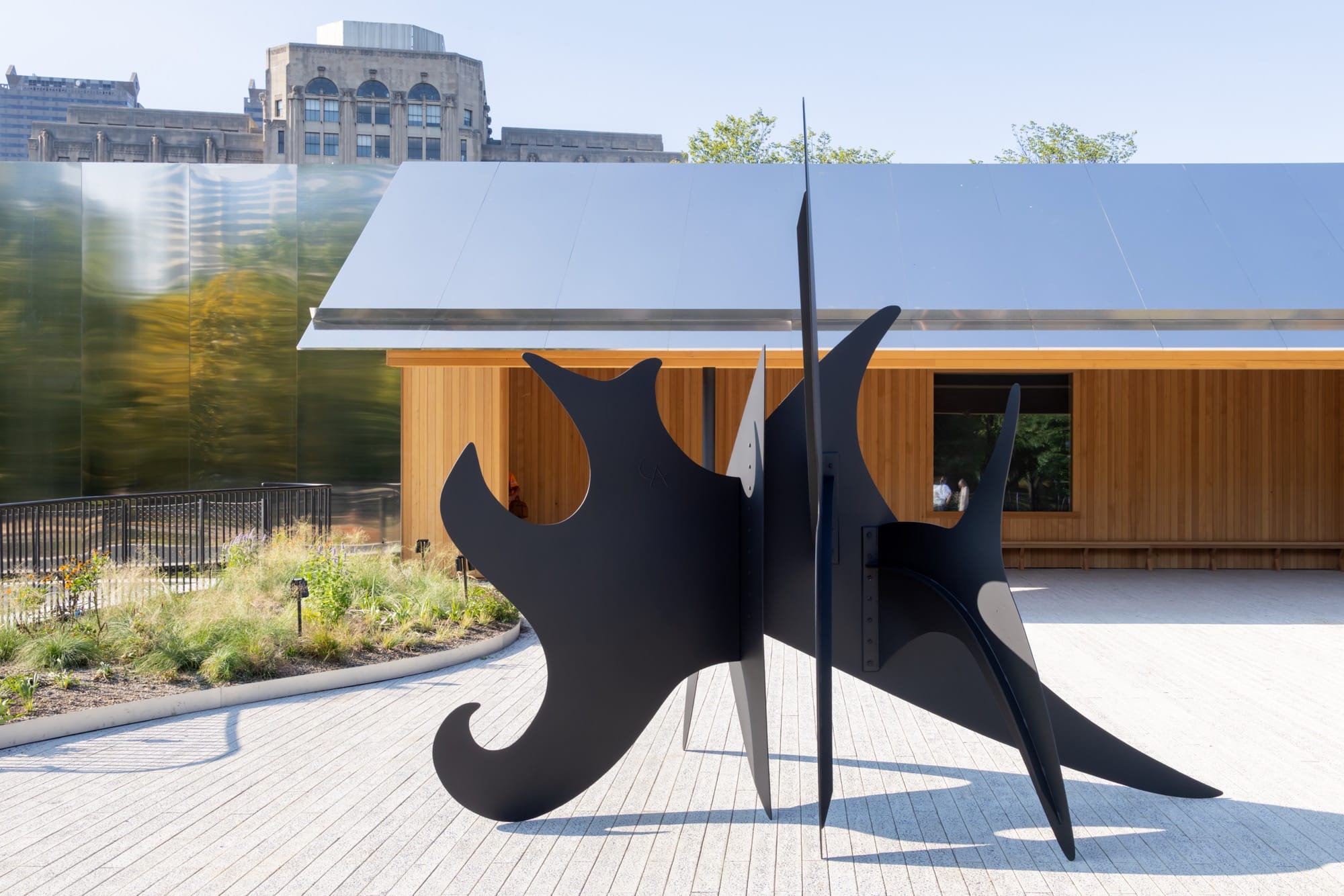
2. Sculpture Collection
• Kinetic Sculptures (Mobiles): Calder’s iconic hanging kinetic sculptures are the centerpiece, their subtle movements driven by air currents and light.
• Static Sculptures (Stabiles): Large-scale metal abstract sculptures are scattered throughout the indoor and outdoor spaces, engaging in a dialogue with the architecture and natural surroundings.
• Interactive Art: Some works are designed as interactive installations, encouraging audience participation to explore the mechanics and aesthetics of the sculptures.
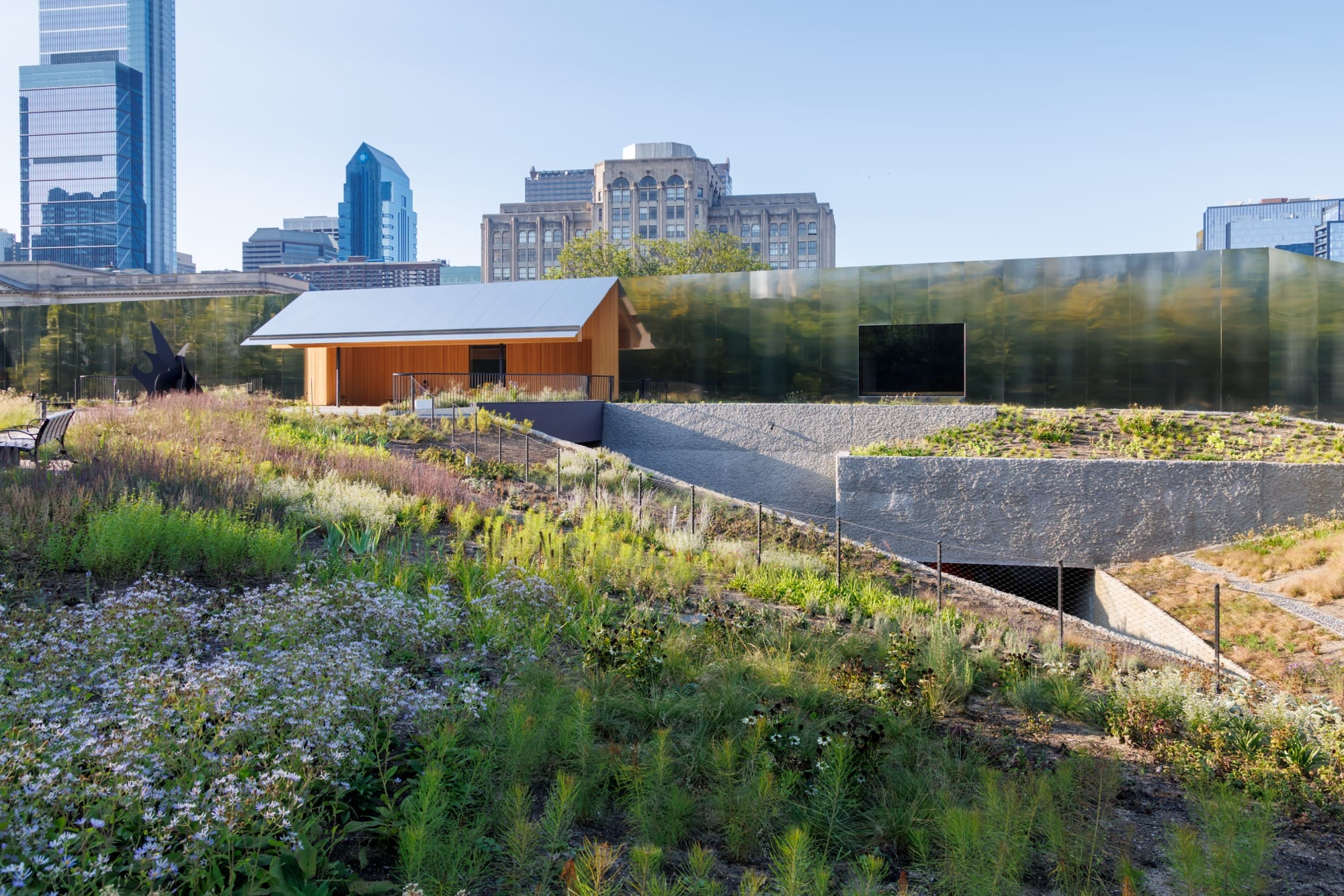
3. Design Philosophy
• Art and Nature in Symbiosis: The museum is not just an exhibition space but an extension of Calder’s artistic philosophy—combining mechanical movement with natural elements (wind, light).
• Immersive Experience: Through the collaborative design of architecture and landscape, visitors feel as though they are immersed in Calder’s “artistic universe.”
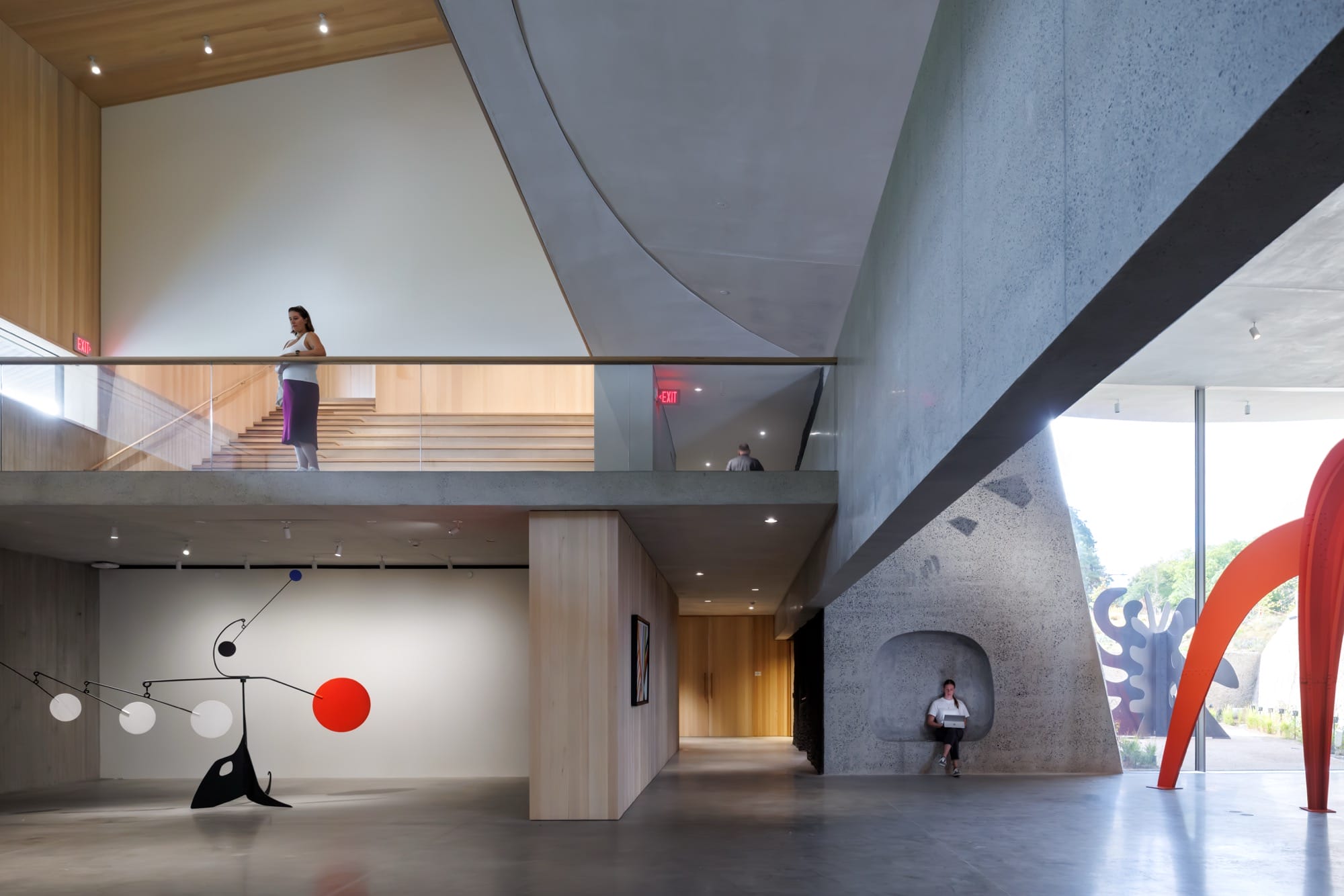
Calder Gardens Museum redefines the boundaries and possibilities of art exhibition spaces through innovative architectural design and natural landscapes, placing Calder’s sculptures in a context filled with light and life.
Chiharu Shiota’s “Diary”: Threads of War Memory
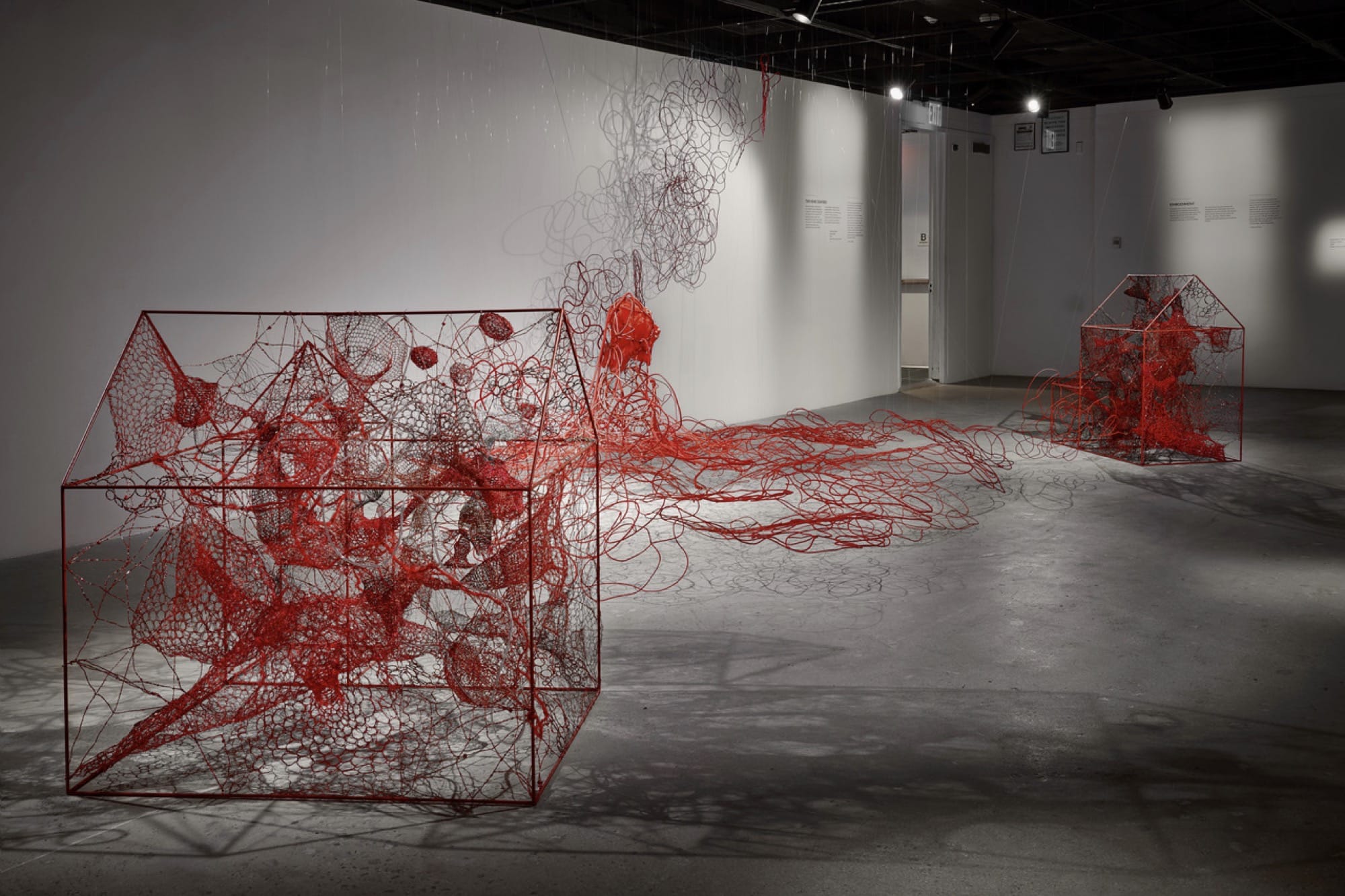
Japanese artist Chiharu Shiota’s installation work Diary centers around diaries from World War II, using blood-red threads to weave a visual narrative space about memory, trauma, and history.
Using kilometers of blood-red thread, she constructs intricate web-like structures, suspending fragments of WWII diaries as if frozen in time. The dense, interwoven threads create a sense of oppression, while the fragility of the paper hints at the fleeting nature of memory. The title “Diary” does not refer to personal narratives but serves as a metaphor for collective trauma—each page representing an ordinary life torn apart by war.
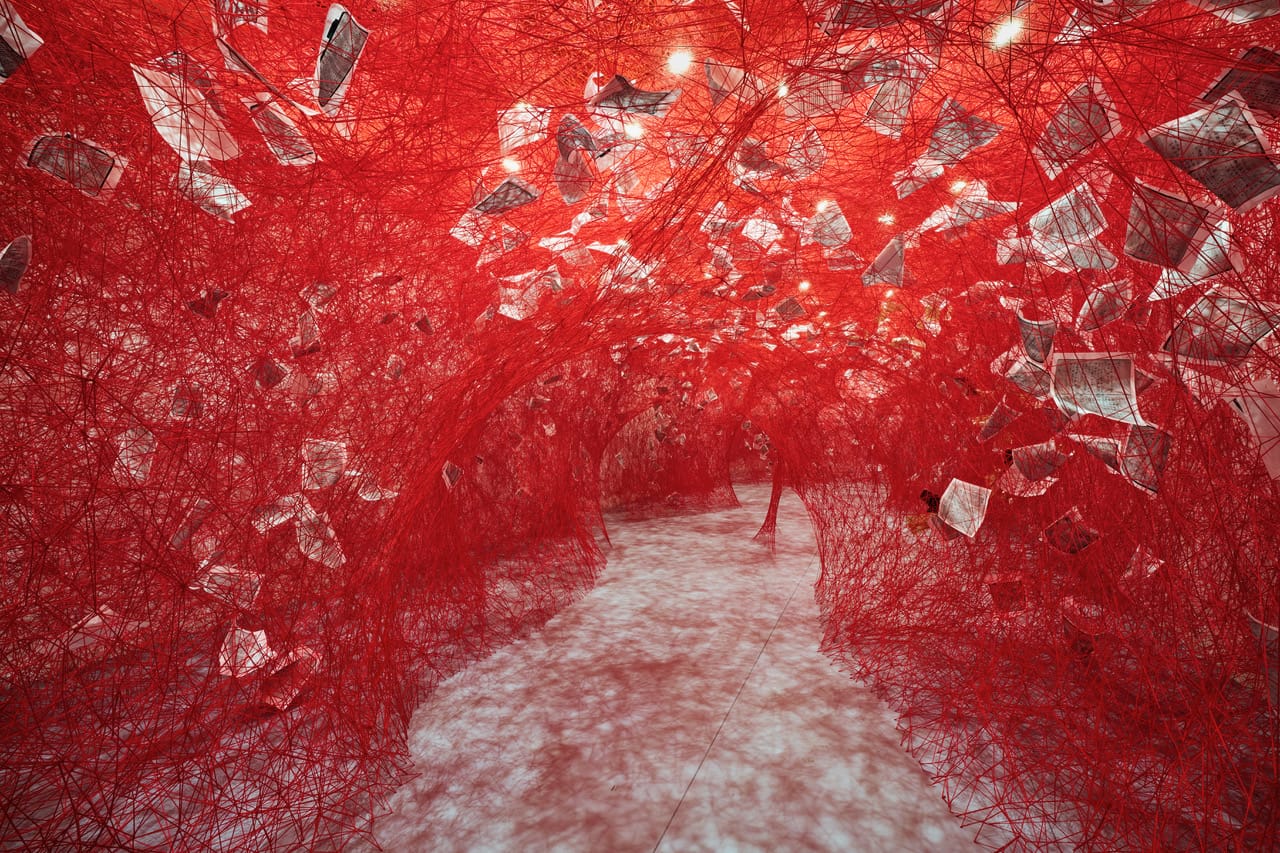
The exhibition space is deliberately dim, with only red spotlights illuminating the threads. Visitors must crouch and move through the installation, their physical interaction becoming integral to the experience. This immersive design forces confrontation with the weight of history, as the threads’ “entanglement” and “restraint” symbolize the psychological scars left by war. Unlike the openness of Calder Gardens, Shiota crafts an enclosed emotional vessel.
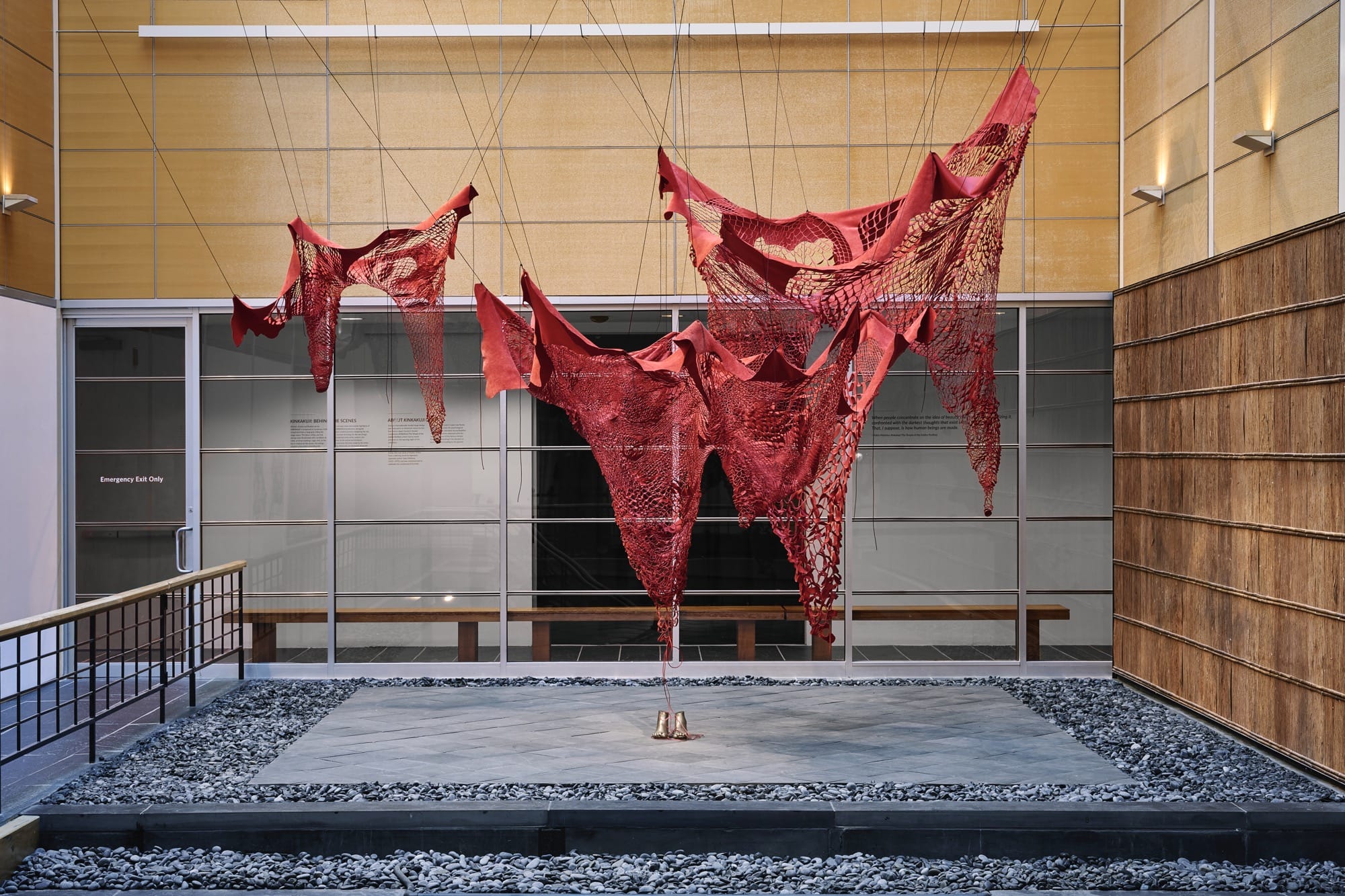
1. Form and Materials
• Blood-Red Thread Web: Countless red threads intertwine to form a dense, web-like structure in the space, symbolizing the brutality of war and the entanglement of memory.
• Floating Diaries: Authentic diaries from WWII are suspended within the thread network, appearing to float in time and space—both fragile and weighty.
• Immersive Environment: Viewers are enveloped in this “web of memory,” compelled to confront the oppressive weight of history.
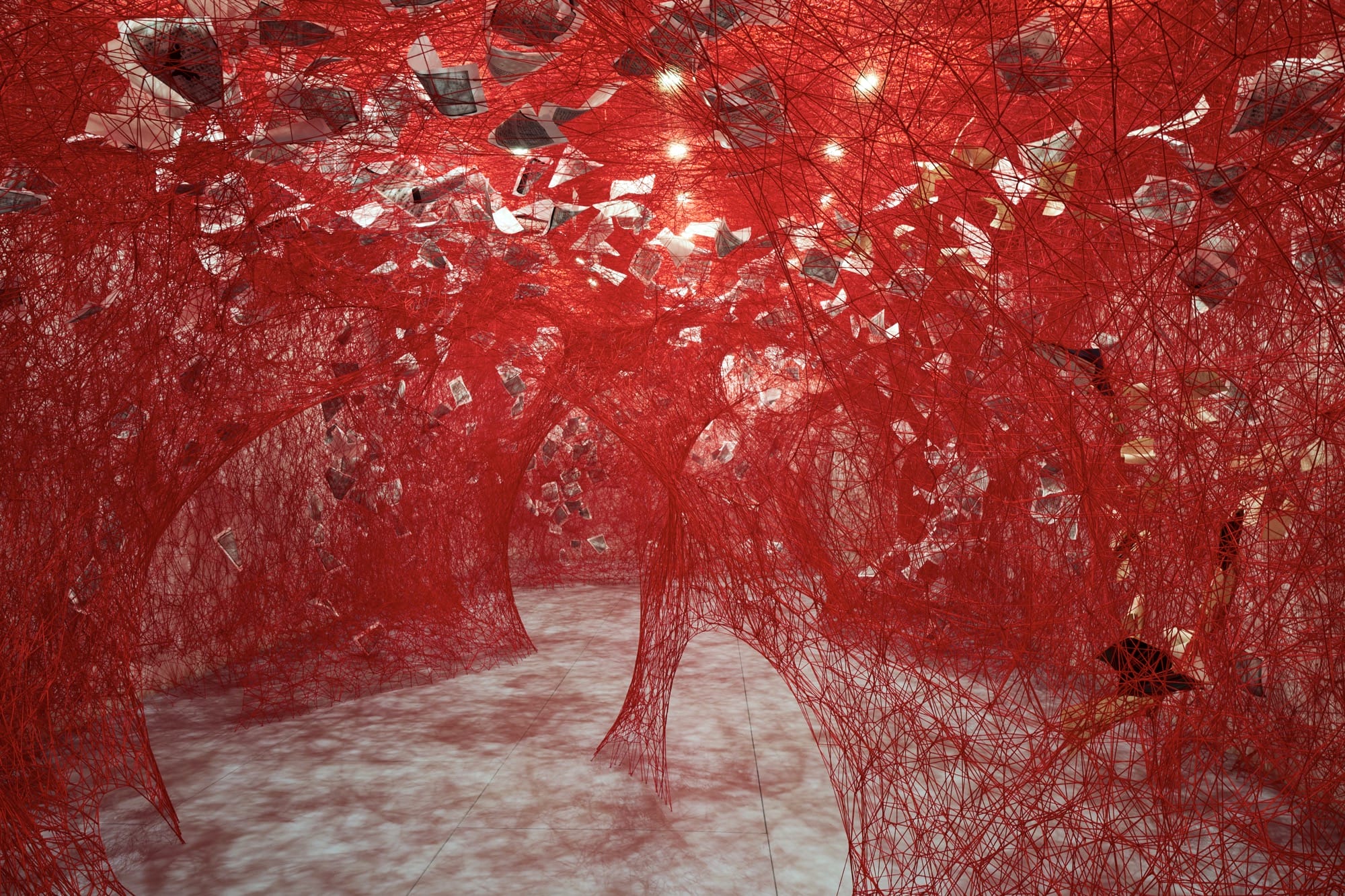
2. Themes and Symbolism
• Personal Memory and Collective Trauma: The diaries, as vessels of personal narratives, are transformed into part of collective history, exploring war’s profound impact on ordinary lives.
• The Metaphor of Red: The blood-red threads symbolize both violence and sacrifice, while also hinting at the continuity of life and emotion.
• Philosophy of “Entanglement”: The interlacing threads represent the complexity of memory—something that cannot be severed, forgotten, nor neatly unraveled.
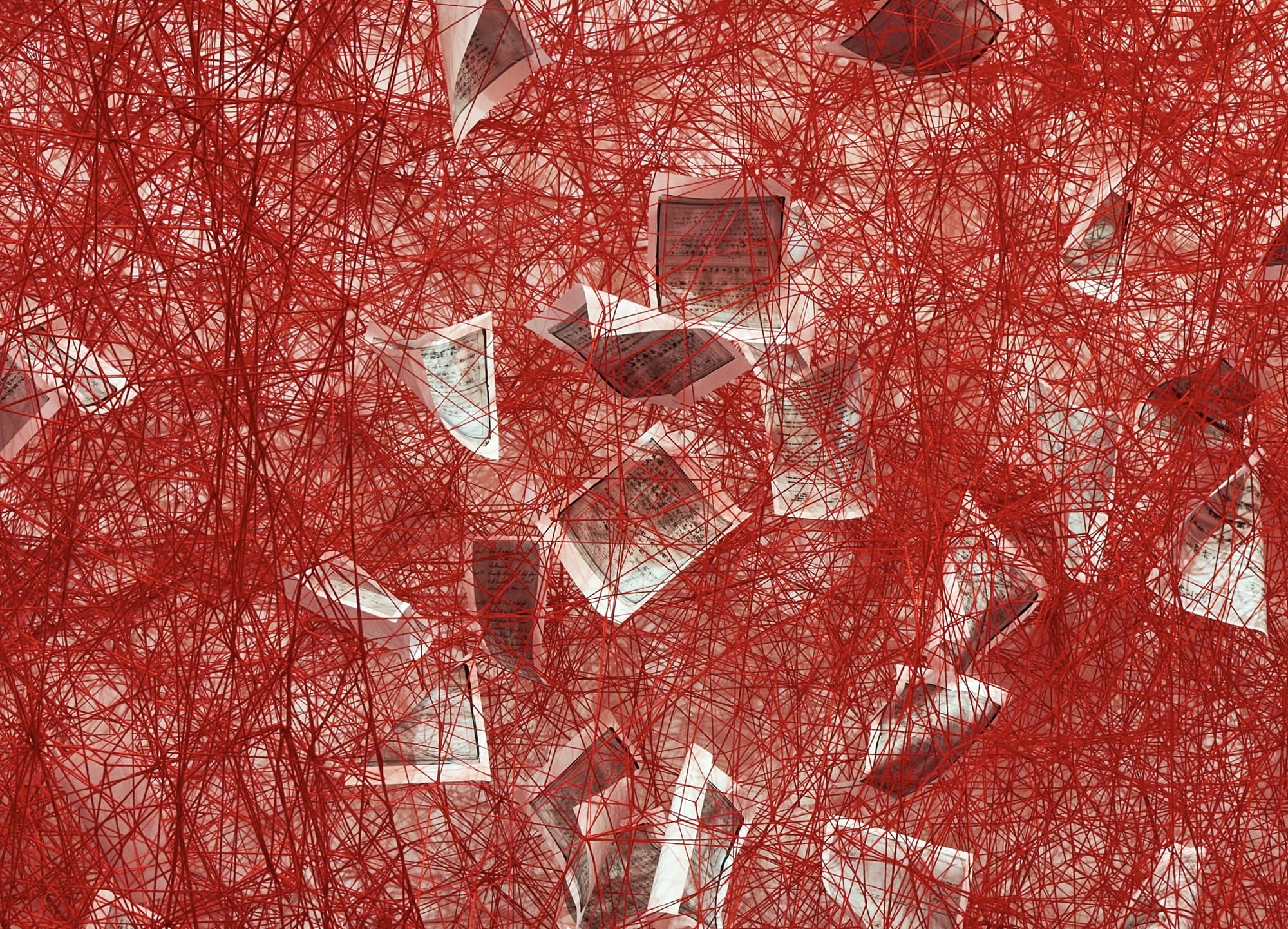
3. Artistic Techniques
• Shiota’s Signature Style: Continuing her thread-based medium, she materializes intangible emotions (fear, loneliness, memory) into tangible physical forms.
• Narrative of Objects: The diaries, as found objects, lend historical authenticity and emotional weight to the work.
• Spatial Intervention: By occupying the entire exhibition space, the installation forces viewers into an experience of being “consumed,” intensifying the oppressive nature of war memories.
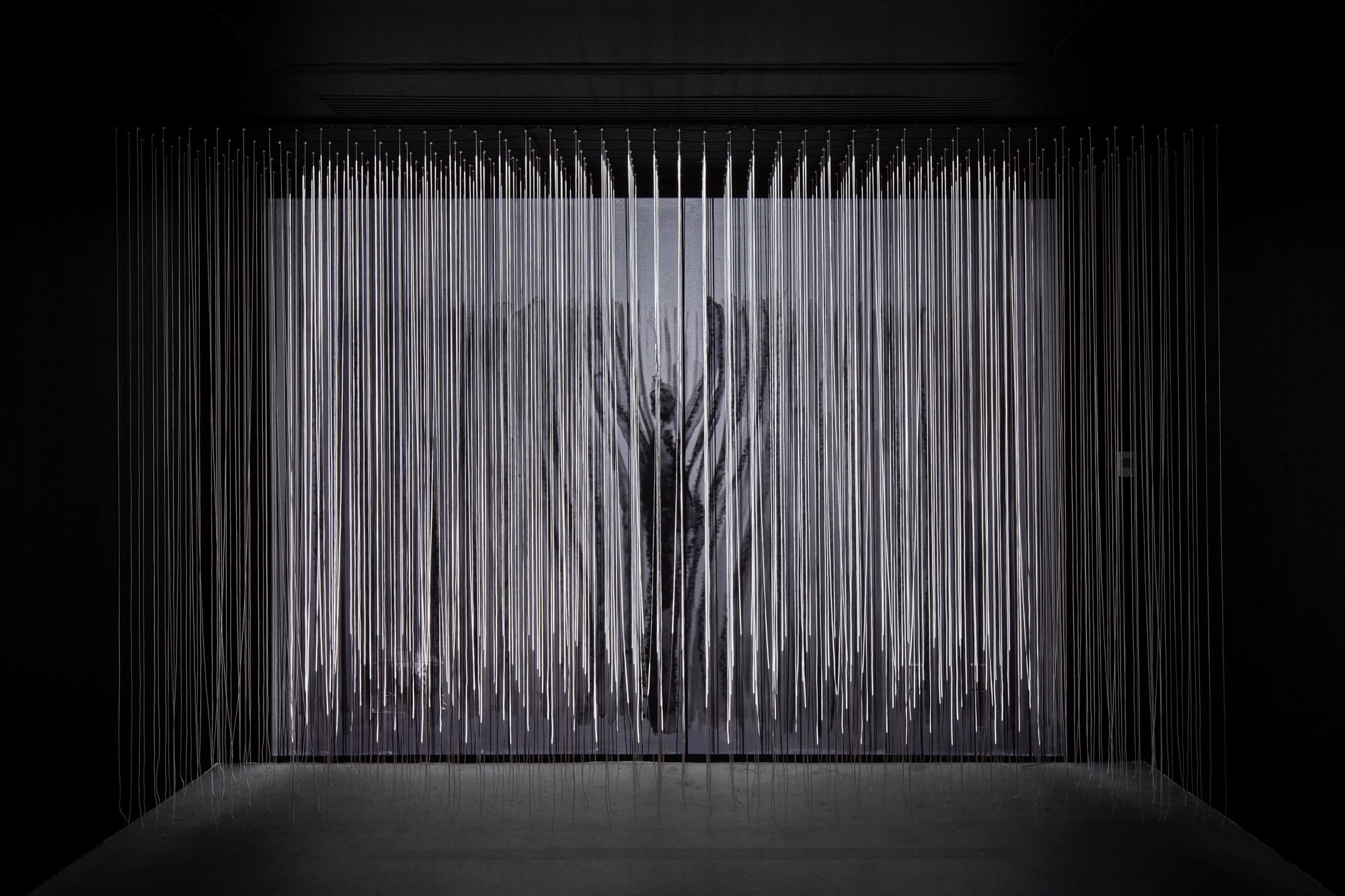
Through minimalist materials (threads, diaries) and striking visual form, Diary transforms WWII history into a contemporary meditation on memory. With her sensitivity as a female artist, Shiota reveals the lingering trauma of war and the eternal resonance of individual narratives within grand historical events.
Two Dimensions of Artistic Expression
Despite their differences, both exhibitions use spatial reconfiguration to convey their artists’ philosophies. Calder Gardens’ “light” and “prairie” symbolize the continuity of life, while Shiota’s “threads” and “text” bear the wounds of history. The former invites participation through physical openness, the latter provokes introspection through psychological intensity.
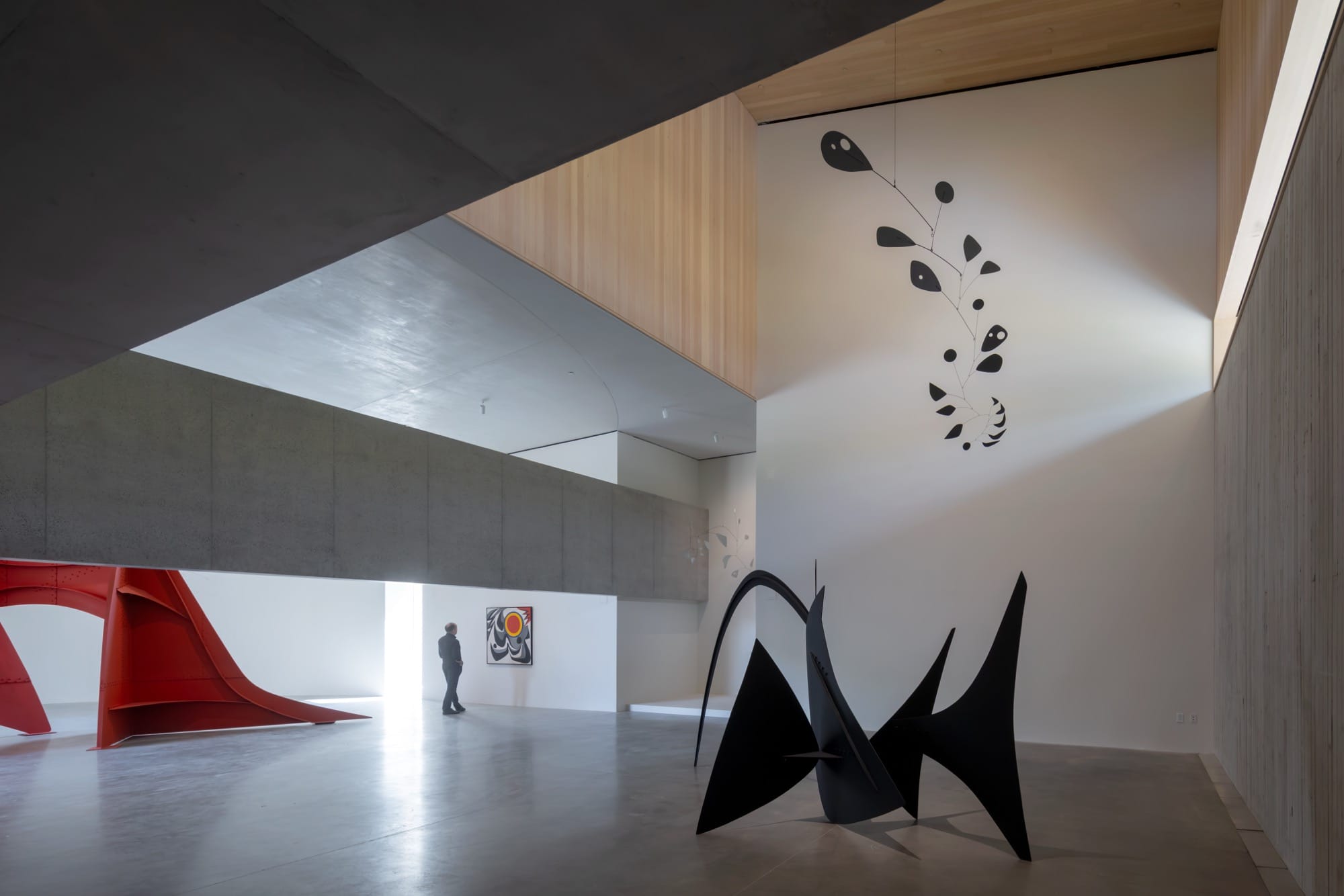
Notably, both challenge traditional static viewing modes: Calder’s sculptures rely on natural elements for dynamic expression, while Shiota’s installation requires audience movement to activate its meaning. This emphasis on participation reflects contemporary art’s shift from object display to experiential creation.
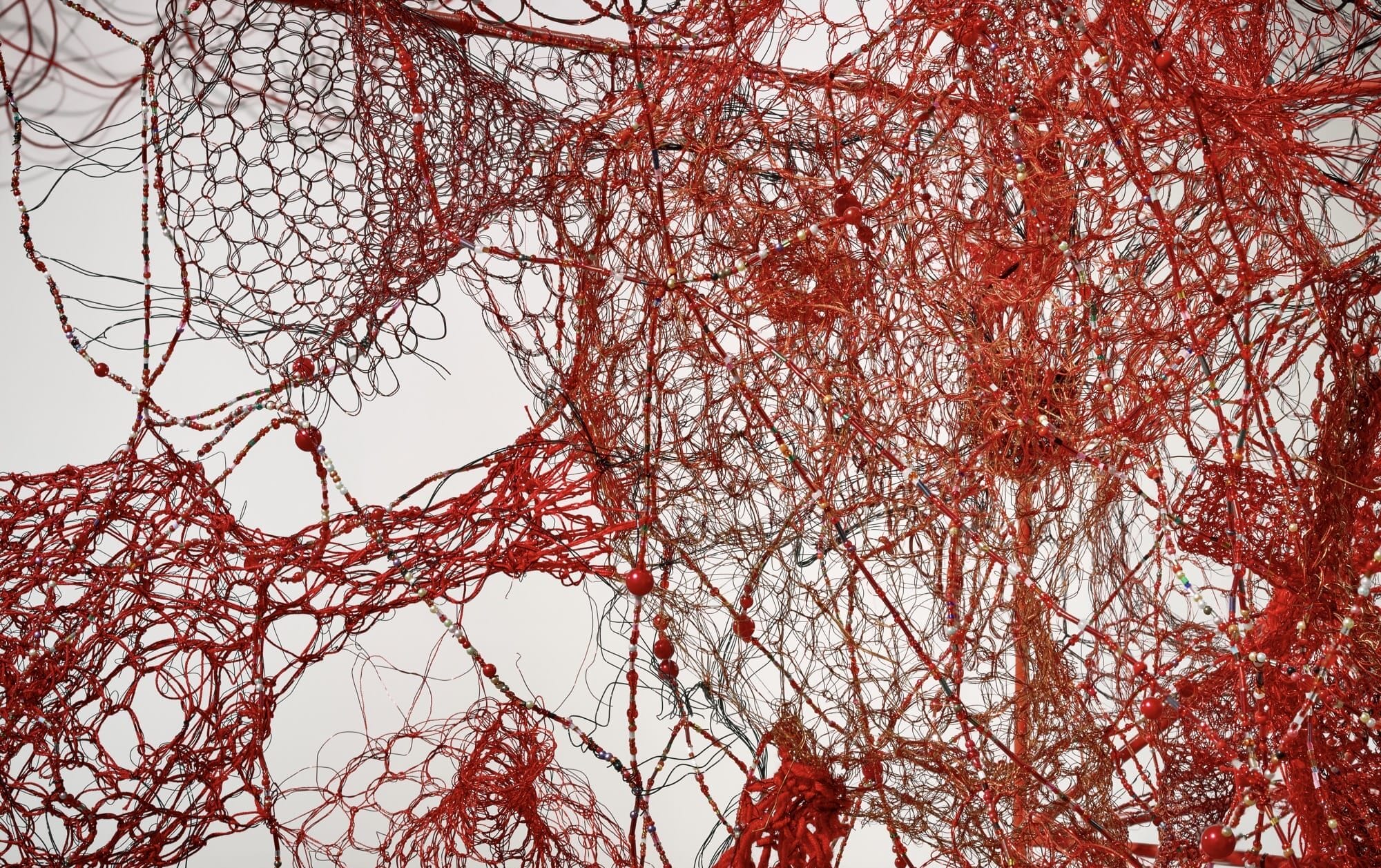
Conclusion
From Philadelphia’s prairie to wartime memories, these exhibitions demonstrate art’s power to transcend time and space. Calder Gardens reminds us to cherish harmony with nature, while Shiota warns against forgetting history. Like two sides of a coin, they pose fundamental questions about existence—whether through the dance of light or the weight of blood.
Previous column:
Interwoven Memory, Space, And Existence: A Cross-Temporal Dialogue Of Three Artists
Written by Alan Huang composed with GenAI for ArtThat, photos by Iwan Baan and Go Sugimoto, courtesy of Calder Gardens, the artist and Japan Society Gallery, shared with permission


